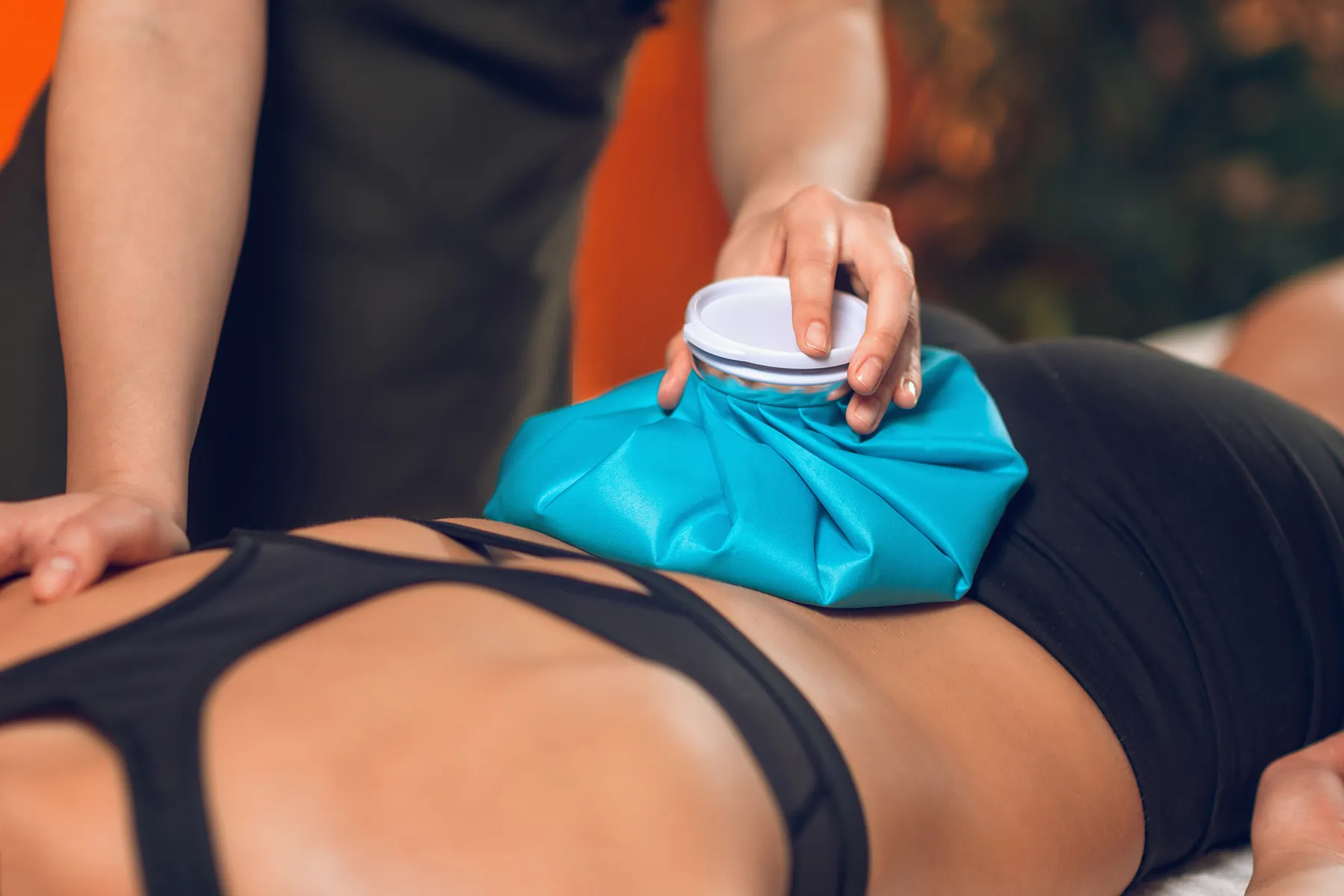For Easing Pain or Swelling, Ice Therapy Hits the Spot

That icy chill can be better than a pill for treating bumps, bangs and achy places.
Hey, chill out!
No, really.
If you’re swollen, sore, or maybe feeling the strain, ice can be nice.
But, like most things, too much of a good thing can be, well, not good.
“Whenever you’re in pain your nerves are going to be very active and they’re going to be sending signals to that injured part, whether it be a muscle or a joint,” says the University of Miami Sports Medicine Institute’s Dr. Stephen Henry, team physician for University of Miami intercollegiate athletics and the Miami Marlins.
“The whole concept of using ice is that it creates what we call analgesia,” he says. “So it reduces the metabolic activity in the muscle and it slows down the ability of the nerves to conduct pain signals.”
Ah, relief.
In that way, ice is like a powerful aspirin that you rub on the outside of your body instead of swallowing – a chill pill, if you will.
But, wait, there’s more.
Ice not only lulls your nerves and dulls the pain, it actually slows down the chemical reaction that causes blood vessels to puff up and pump more fluid to that achy, achy part. The technical explanation is this: Histamine causes vasodilation. Ice decreases its release. And, voila! It cuts down the swelling.
“Say, for example, if you hurt your knee or twisted your knee and there’s a lot swelling in that joint,” Henry says. “Ice would be perfect because it slows down how much fluid gets in the knee and it controls your pain.”
So, when should the icepack cometh?
“The general indication for ice is if you have an acute muscle strain,” Henry says. “if you have a muscle spasm. If there is joint inflammation, a lot of fluid in an area, and you are trying to slow down swelling. Ice works perfectly for that.”
Athletes often include ice therapy as part of their routine, even in-game, preventative care. You’ve seen them – pitchers and quarterbacks and basketball players sitting on the bench with a pack of ice wrapped tight on their shoulders or knees.
Henry says non-pros, too – CrossFitters, runners, tennis players, and the like – might see similar benefits from giving themselves the cold treatment.
But, do it wrong and you’ll get burned. Literally.
Ice should go on in short spurts, say 10 or 15 minutes at a time. Longer than that and you risk damaging your skin. As in ice-burns and frostbite. Really.
Putting ice in a pack or a plastic bag and wrapping it in a towel helps with that, too.
Also, believe it or not, there are people who are allergic to the cold. Ice could trigger a reaction. So could Reynaud’s phenomenon, which causes blood vessels to shrink dangerously.
For most of us, though, ice therapy can be just what the doctor ordered.
Except for those times when we should consider applying heat. But that’s another story.
Carlos Harrison is a former national and international television correspondent, as well as a newspaper and magazine writer and editor. He’s also the author of 15 books and seven screenplays. So far. In short, he likes telling people’s stories and giving them insights into things that can help them live healthier and happier — whether it’s about medicine, the law, travel, or anything else.
Tags: Dr. Stephen Henry, inflammation, injury, joint pain, sports injury, sports medicine, University of Miami Sport Medicine Institute
